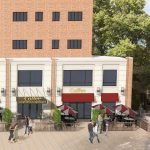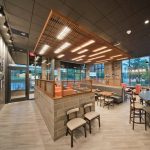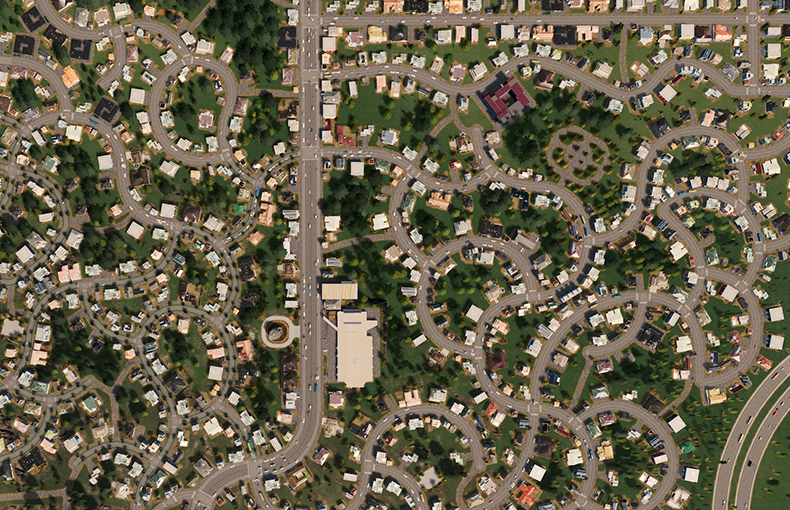Cities vs Suburbs
American society is commercialized and highly de-centralized, suburban areas tend to be less planned than their urban counterparts. In many instances suburban communities are conceived and built by real-estate developers, where profit is the primary motive. These conditions shape the structure and character of contemporary suburban developments, leading to a high volume of comparatively low quality housing. They also militate against civil space and social cohesion, relying on the commoditized symbols of the American Dream to create a false sense of harmony and order. The result is superficial—and arguably unsustainable—human geography.
The future of this geography is uncertain. Since 2008, the so-called “Great Recession” has transformed the American landscape by forcing people to leave their suburban dwellings in the hope of finding lower costs and higher incomes closer to the cities. Many Americans have abandoned home ownership in favor of renting. Combined with tight credit markets and high foreclosure rates, the result has been a steady—an in some regions systematic—collapse of the hyper-inflated housing markets. As a result, miles and miles of previously unplanned suburban (and in some cases, exurban) areas now appear abandoned, with aging houses falling apart and unoccupied strip malls stretching far along empty roads.
Technological Advancements for Better Suburbs
From Florida to Nevada, these failing communities tell a compelling story about the dangers of poor planning, poor land use, and unsustainable ambitions. Other factors may also be at play, however. Chief among them are technological advancements such as telecommuting, which allow suburban dwellers to define their communities according to their lifestyle, rather than in terms of their proximity to their employer. Many employers are beginning to realize that allowing their workers to telecommute increases productivity while reducing overhead, thus contributing to improved efficiencies and revenues. Telecommuting also reduces energy consumption and eases the burden on existing transportation infrastructure. As suburban commuters free themselves from the need to travel to and from city centers, urban and suburban areas will achieve a better equilibrium.
This improved equilibrium might lead to a better planning, particularly as the inhabitants of so-called “bedroom” communities focus less attention on the commute and more on their immediate surroundings. Better equilibrium would also encourage sustainable re-urbanization, with people returning to the cities as housing costs and densities decline. This new focus on reconstructing organic communities could contain or even shrink the expanding suburban periphery, with land from abandoned housing developments repurposed for organic farms situated near the consumers and retail distributors—thereby further reducing transportation and energy costs while enhancing social and economic ties at the local level.
Other innovations also have a role to play. Chief among them are technologies that maximize local power generation, energy storage, and water conservation. Combined with new public policies designed to promote smaller footprint and ecologically conscious building practices, such measures could redefine both the city and suburbia in a fashion that encouraged a better living environment. In this manner, careful planning and technological progress could “reconstruct” the American dream in more sustainable (and less superficial) ways, even as it knits the urban center and suburban periphery into a more coherent, organic whole.







